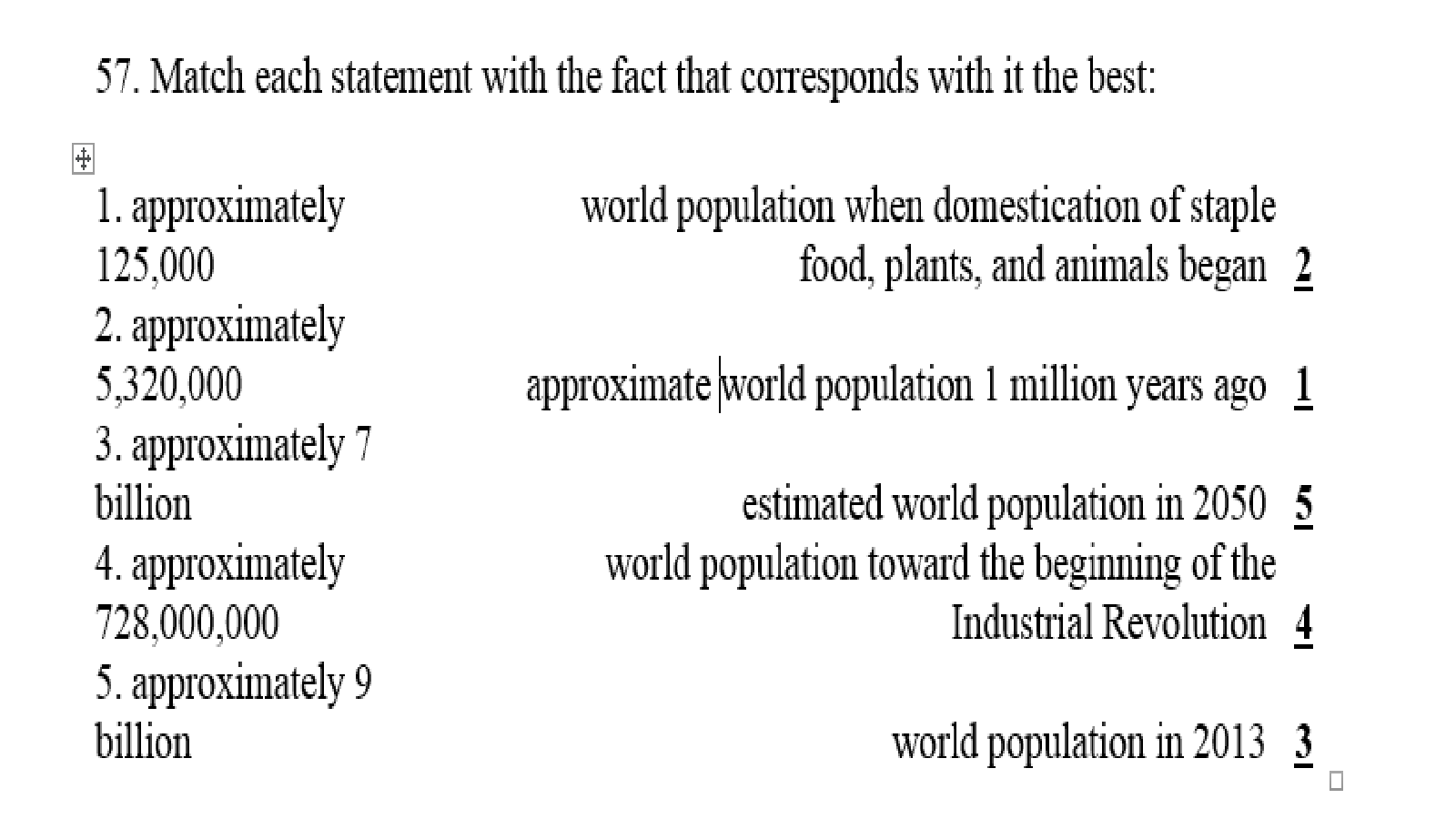Paranthropus boisei of Olduvai
A) was discovered by Louis and Mary Leakey
B) was first found in 1959
C) is dated to 1.75 million years ago
D) coexisted with "early Homo"
E) all of the above
E
You might also like to view...
Match each statement with the fact that corresponds with it the best:

What have researchers learned by looking at the molars and other cranial features of H. erectus?
A. H. erectus was more dependent on tubers than earlier hominins. B. H. erectus was more dependent on hunting—and the lifestyle it demanded—than earlier hominins. C. The chewing apparatus of H. erectus was essentially the same as that of H. habilis. D. The paucity of dental remains of H. erectus has made it difficult for researchers to say anything significant. E. H. erectus had yet to make the shift to hunting seen later on with Neandertals.
After reaching an all-time low for the twentieth century in the 1970s, the nuclear family is now making a rebound, accounting for a greater number of U.S. households each year.
Answer the following statement true (T) or false (F)
In 1987, a group of molecular geneticists at the University of California at Berkeley offered support for the idea that anatomically modern humans arose fairly recently in Africa, then spread out and colonized the world. The geneticists analyzed genetic samples of 147 women whose ancestors came from Africa, Europe, the Middle East, Asia, New Guinea, and Australia. By estimating the number of
mutations that had taken place in the mithochondrial DNA (mtDNA) of each of these samples, the researchers concluded that A. everyone alive today has mtDNA that descends from a woman (dubbed "Mitochondrial Eve") who lived in sub-Saharan Africa around 200,000 years ago and that her descendants left Africa no more than 135,000 years ago. B. everyone alive today has mtDNA that descends from a woman (dubbed "Mitochondrial Eve") who lived in Asia around 50,000 years ago and that her descendants left Asia 100,000 years ago. C. establishing a "genetic clock" to model human evolution is reliable only when focusing on 50,000 years into the past. D. everyone alive can count the Neandertal of western Europe as their ancestor. E. Neandertals coexisted with modern humans in the Middle East for at least 2,000 years.